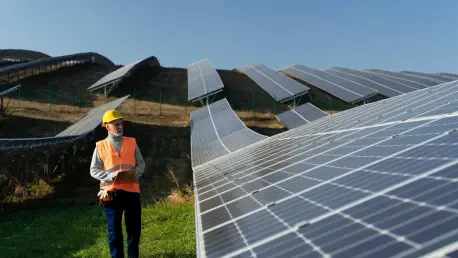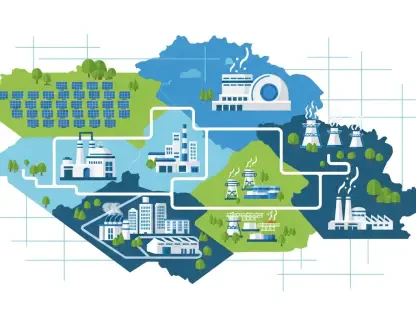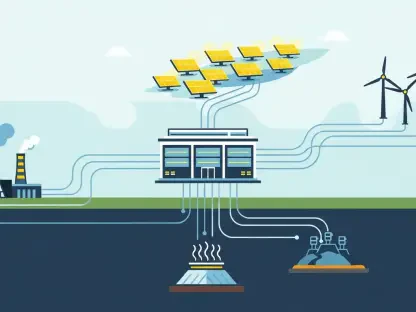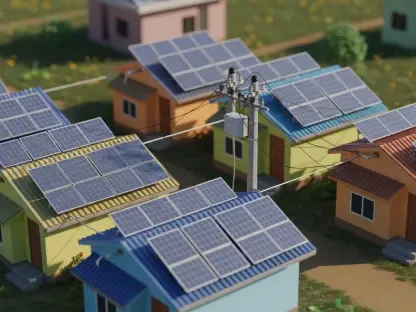Introducing Christopher Hailstone: With a solid background in energy management, renewable energy, and electricity delivery, Christopher is known for his insights on grid reliability and security. As an expert in utilities, he’s uniquely positioned to discuss the sweeping changes that the “One Big Beautiful Bill Act” brings to U.S. energy policy. This conversation will explore how the bill reshapes the federal role in energy markets, its impact on fossil fuels and renewable energy, and broader implications for energy reliability and security.
Can you explain the main objectives of the “One Big Beautiful Bill Act” in terms of American energy policy?
The “One Big Beautiful Bill Act” is primarily about restructuring U.S. energy policy with a clear focus on enhancing fossil fuel production and energy independence. It marks a departure from the previous administration’s emphasis on clean energy. The bill aims to maximize domestic energy output while scaling back federal support for renewable technologies, thus bolstering U.S. economic and energy security. This legislation ensures that energy policy reflects priorities of self-sufficiency and reliability over stringent environmental targets.
How does the bill reshape the federal government’s role in energy markets compared to the Inflation Reduction Act?
Unlike the Inflation Reduction Act, which sought to intertwine renewable initiatives with fossil fuel projects, this bill steers the federal government towards a more traditional stance, favoring fossil fuel production without the prerequisite of renewable energy developments. The act decisively delinks oil and gas lease sales from renewables, redesigning federal involvement to revive domestic energy production while minimizing regulatory constraints.
What are the key provisions in the bill that support fossil fuel production and energy independence?
The bill renews tax advantages for oil and gas producers, mandates new lease sales across federal lands and waters, and eases regulatory hurdles previously stifling fossil fuel industries. It reinstates deductions for intangible drilling costs and delays the methane emissions fee until 2035, thereby providing the industry with a clearer pathway to ramp up production without immediate regulatory penalties.
How does the bill impact oil and gas lease sales across federal lands and offshore areas?
This legislation significantly increases the frequency and scope of oil and gas lease sales. It requires over 30 quarterly lease sales annually onshore, and mandates additional offshore leases in historically low-sales regions like the Gulf of Mexico. By unlinking oil and gas sales from wind leasing and reviving pre-IRA royalty rates, the bill aims to provide greater security and predictability in lease opportunities.
What are the changes in tax advantages for oil and gas producers under the new legislation?
The bill reintroduces full deductions for intangible drilling costs, which can comprise a significant portion of well expenses. It also boosts the carbon capture tax credit for enhanced oil recovery applications, allowing producers to utilize captured carbon dioxide in a way that is economically beneficial.
What are the implications of loosening regulatory burdens on the oil and gas industry?
By reducing regulatory pressures, the bill aims to streamline operations for oil and gas industries. This approach is expected to enhance production efficiencies and lower costs associated with meeting stringent environmental standards, thereby fostering a more competitive landscape in fossil fuel markets while securing energy reliability.
How does the bill address the methane emissions fee, and what is the rationale behind the delay until 2035?
Recognizing the industry’s need to adapt, the legislation defers the methane emissions fee until 2035. This delay gives producers time to implement advanced technologies and strategies to mitigate emissions without facing immediate financial burdens, aligning economic objectives with environmental considerations.
Can you describe the adjustments made to the carbon capture tax credit for producers in the bill?
The bill augments the carbon capture tax credit specifically for oil recovery techniques, incentivizing producers to leverage captured carbon dioxide to enhance oil extraction. This change not only promotes carbon capture technologies but also integrates them into practical, profit-driven processes.
What are the concerns surrounding carbon capture and storage, as highlighted in the bill?
Carbon capture and storage is riddled with challenges, notably its high costs and infrastructure demands, alongside public skepticism towards pipelines and storage sites. Despite substantial investments, current CCS projects only address a small fraction of global CO₂ emissions. Thus, while the bill encourages carbon capture, it acknowledges inefficiencies that necessitate reevaluation of its widespread application.
How does the bill’s approach to offshore oil and gas leasing differ from President Biden’s policies?
President Biden’s policies sought to limit offshore leasing, entwining them with renewable energy commitments. In contrast, this bill expands offshore offerings significantly, mandating additional leases to enhance production capacity without binding them to renewable projects. It’s a move towards enlarging fossil fuel production unencumbered by renewable constraints.
What is the expected impact of the bill on federal revenues from offshore leases?
By increasing offshore lease sales, the bill is projected to boost federal revenues significantly. Offshore leasing accounts for a notable portion of domestic oil production, and with expanded offerings, the government anticipates increased financial returns, bolstering economic and energy security.
How does the bill influence onshore federal acreage lease sales and royalty rates?
The act tightens the focus on onshore production by reinstating lease sales in key states and reverting royalty rates to pre-IRA levels. It allows for non-competitive bids and encourages greater producer engagement through stabilized costs, aiming to rejuvenate domestic production effectively.
Are there any specific provisions for lease sales in Alaska, and what areas are affected?
The bill mandates lease sales specifically in Alaska’s National Petroleum Reserve, enhancing oil extraction opportunities. However, sale mandates for Alaska’s Arctic National Wildlife Refuge did not make it into the final legislation, highlighting a balanced approach between environmental considerations and production goals.
How does the bill affect the coal industry’s access to federal lands and tax credits?
The coal industry sees a favorable adjustment with expanded access to federal lands and reductions in royalty payments. It’s paired with advanced manufacturing tax credits for mining metallurgical coal, aimed at supporting domestic steel production, reflecting a strategic focus on industrial growth.
What changes does the bill bring to the renewable energy tax credits, specifically for wind and solar energy?
Wind and solar tax credits are gradually phased out, marking a significant shift from the previous broad support these sectors received. The act limits credits to projects commencing construction within 12 months of the bill’s enactment, emphasizing a competitive market environment.
Can you explain the loophole related to solar and wind projects under the new bill?
The loophole allows projects committing 5% of costs within 12 months to qualify as “under construction,” extending credit eligibility under specific terms. This provision provides breathing room for projects already in development yet must be carefully managed to prevent prolonged subsidies.
What is the significance of President Trump’s executive order regarding clean energy tax credits?
President Trump’s executive order aims to terminate market-distorting subsidies for wind and solar, redirecting federal support towards more reliable and domestically controlled energy sources. This aligns with a broader focus on U.S. energy dominance and economic growth.
How does the bill tackle intermittency and non-dispatchability issues associated with wind and solar energy?
The bill critiques reliance on intermittent renewable sources, pushing for energy policies that prioritize dispatchable energy technologies like nuclear and fossil fuels. It challenges the notion that renewables are sufficiently reliable without substantial backup infrastructure, advocating for diversified energy portfolios.
What does the data from the International Energy Agency suggest about the correlation between renewable energy shares and electricity prices?
IEA data highlight a correlation between increased shares of wind and solar and elevated electricity prices. This connection underscores the importance of factoring in reliability costs which renewables incur, challenging assumptions about their economic efficiency when compared to traditional energy sources.
How does the bill’s repeal of electric vehicle tax credits affect consumer choices in the automobile market?
With EV tax credits repealed, consumers will face more upfront costs when opting for electric vehicles, potentially slowing market adoption. It empowers consumer choice by letting market forces dictate preferences rather than government incentives and aims to foster competition among vehicle technologies.
What are the broader implications of the bill for net-zero goals and environmental policies?
The bill marks a retreat from aggressive net-zero targets, emphasizing practical energy reliability and economic objectives over strict environmental policies. By curtailing renewable subsidies, it steers towards energy security and market-driven priorities that support traditional industry growth.
Can you summarize how the bill affects energy reliability, domestic production, and government restraint in energy policy?
The bill enhances energy reliability through expanded fossil fuel production and reduced regulatory constraints, fostering domestic energy resilience. It signals government restraint in subsidizing specific technologies, promoting a balanced approach focused on market-driven energy policy.
How does the bill signal a shift from government-directed energy transitions to a market-driven approach?
By scaling back federal support for renewables and EVs, the bill allows market dynamics to dictate energy transitions. It centers on consumer choice and competitive industry practices, reinforcing the belief that markets should drive innovations rather than being mandated by government subsidies.
What are the potential economic impacts of scaling back federal support for renewable energy and electric vehicles?
The reduction in subsidies may lead to increased costs and slower adoption rates for renewables and EVs, impacting sectors reliant on government incentives. However, it also incentivizes innovation and efficiency improvements as companies strive to compete organically without federal backing.
How might the bill shape the future of U.S. energy policy and its alignment with national security priorities?
By prioritizing domestic energy production and reducing dependence on subsidized renewables, the bill aligns energy policy closely with national security priorities. It fosters energy independence and economic robustness, positioning the U.S. as a global leader in secure, reliable energy production.
Do you have any advice for our readers?
Understanding how policy shifts can impact the energy landscape is crucial. Stay informed about energy markets and emerging technologies, and consider how changes in federal policy might affect personal energy choices and broader community impacts. Dive deeper into the energy narratives that shape our environment and the economy.









